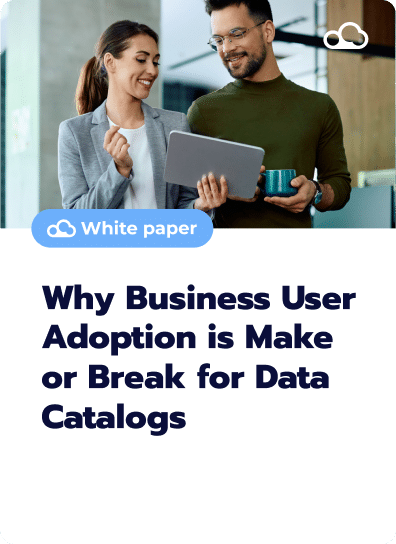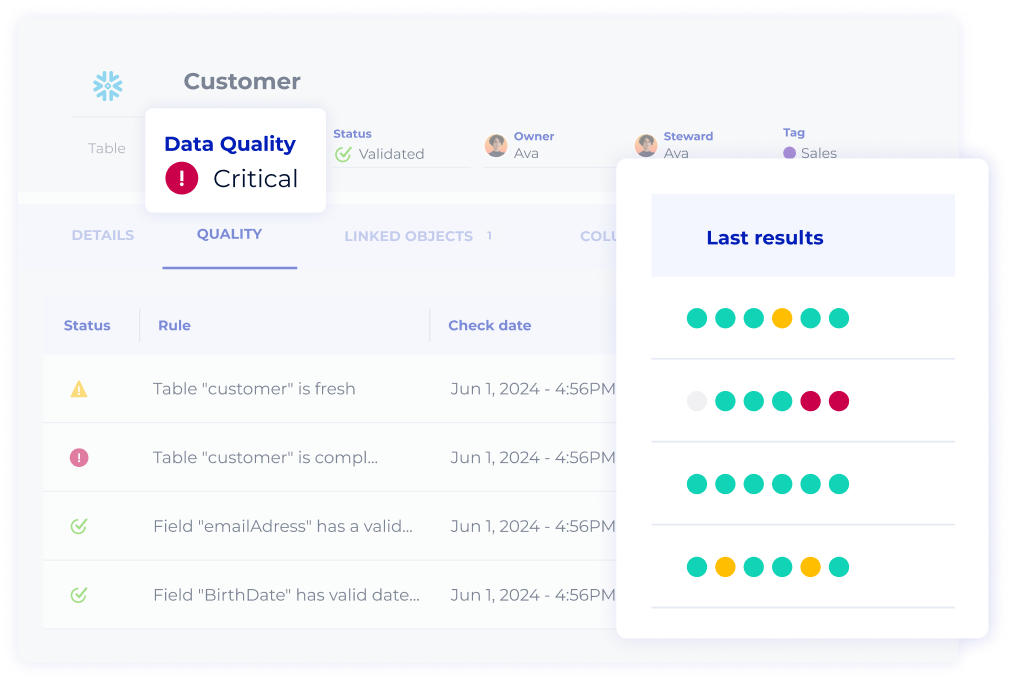The Chief Data Officer (CDO) role is becoming increasingly critical. Previously, it was only assigned as an additional responsibility, but it has quickly become a full-time role in most organizations. So, what are the main challenges and responsibilities of CDOs?
The role of the Chief Data Officer
The Chief Data Officer is the highest authority regarding managing and overseeing an organization's data. Their biggest mission is to make the most of the company's data and ensure all teams leverage it as much as possible.
The Chief Data Officer is also responsible for optimizing data collection, storage, reliability, and quality. However, as this role is relatively new, it evolves quickly and may differ depending on the company.
#1: Respond to business challenges
Getting lost in the tactical and technical issues of data management is too easy. The risk is even higher if the Chief Data Officer has a technical profile. However, Chief Data Officers must keep the business's needs at the forefront of their minds. If data governance's strategic and cultural aspects are left aside, business leaders may not feel as implicated as they should.
If they are not fully convinced, they will not change their data-related practices and will not communicate enough with the data experts. The result: The business impact will be significantly lessened.
#2: Avoid becoming a double agent in the service of data
While the Chief Data Officer has become a single, official position, it still happens that they might assume two separate roles simultaneously: Chief Data Officer and Chief Digital Officer. Yet, these two roles should ideally be assigned to two different people, as the responsibility load is typically too great to merge the two.
If your company's Chief Data Officer is also its Chief Digital Officer, they are responsible for advising business representatives on the overall digital strategy. Those objectives include:
- Advise on emerging digital business models, in particular, to generate more revenue and not be overtaken by the competition
- Optimize the use of digital tools within the company
- Improve data governance
#3: Be compliant with sensitive data regulations
Compliance with data regulations, such as the GDPR, is a major occupation for most Chief Data Officers. What to do with sensitive and personal data collected by the company?
How do you use it while being compliant with regulations? Do we need to change some internal processes?
While these questions are essential, they should not be at the heart of the Chief Data Officer's issues. Their role is to serve the business and find business benefits in the company's data to improve decision-making. Managing compliance and sensitive data is best left to the Data Protection Officer.
#4: Accompany teams in change management
Depending on the company, stakeholders can slow down change attempts. The executive committee, the IT department, the business referents, and even the employees may refuse the change for various reasons:
- Too high a demand for financial or human resources
- Lack of motivation to change daily work habits
- Discouragement in the face of the magnitude of the task at hand
To convince them to accept the change, it's advisable to start by proposing a simple and quick use case. This will serve as an example for the Chief Data Officer and help the rest of the company understand the importance of data governance and its smooth implementation.
Data Knowledge Catalog
DataGalaxy’s Data Knowledge Catalog offers a unified solution for metadata management, enabling centralization with a Data Dictionary, precise data processing, lineage tracking, and a detailed Business Glossary.
Our fully-automated data catalog and customizable API optimize data integration into our platform to unleash the potential of your company’s metadata. Connect all your data to our knowledge base via our library of connectors to easily centralize all your data, no matter its original source.
The Data Knowledge Catalog offers 70+ integrated connectors to effortlessly import your projects into one dynamic, customizable data landscape.
Adopting a data culture means adapting to new tools and internal processes. However, the key notions linked to data transformation are often misunderstood or confused: Digital vs. data, data hub vs. data lake, governance vs. compliance, dataviz vs. business intelligence, etc. Creating a general understanding of these terms is a big challenge for the Chief Data Officer.
The role of the Chief Data Officer is to evangelize the teams. If employees and managers understand the challenges of the data culture and take ownership of them, they will easily adopt the company's transformation and change management.
The objective is to get all the company's departments to work together. Better data use means a better impact on the business plan.
#6: Adapt and work with suboptimal legacies
The company's IT systems are not always adapted to the needs identified by the Chief Data Officer.
While the idea is not to replace all the tools, it is nevertheless essential to acquire new data storage and analysis technologies to ensure the performance of business references. The question is: How do we integrate them into the existing infrastructure?
There is no need to change everything: The process would be too expensive, too complicated, and too long to implement. Small changes in daily practices are needed that will have a significant positive impact on the whole company.
#7: Overcome the lack of visibility into the data lifecycle
Data quality is not defined or heterogeneous: The data collected by the company does not always have a clearly defined source, transformation, and use.
Moreover, data is sometimes managed in silos in different departments. These departments do not have the same uses or interpretations of the information they use, making it more difficult to understand the available assets.
How can we make data accessible to everyone? The Chief Data Officer must lead a data mapping project using a data catalog. This will enable them to trace the origins, see the transformations made, and determine their uses.
#8: Build a team of data people
To ensure the implementation of data governance, the Chief Data Officer must build a strong team of data-driven employees. Data Scientists, Analysts, and Architects are highly sought after, but candidates are few and far between.
Hasty recruitment is one of the leading causes of data governance strategy failure. Don't hesitate to invest the time and effort required to establish a strong data team.
Chief Data Officer: An evolving role
The role of the Chief Data Officer is likely to grow substantially in the coming years as more industries begin to realize the importance of having someone oversee their data.
The position is becoming increasingly complex, and the CDO needs to stay up-to-date with new developments to have a sustained impact on the organization. The job itself continues to evolve, with new players entering the scene to help this individual with their mission.
Fueling smarter decisions for
200+ industry powerhouses.










